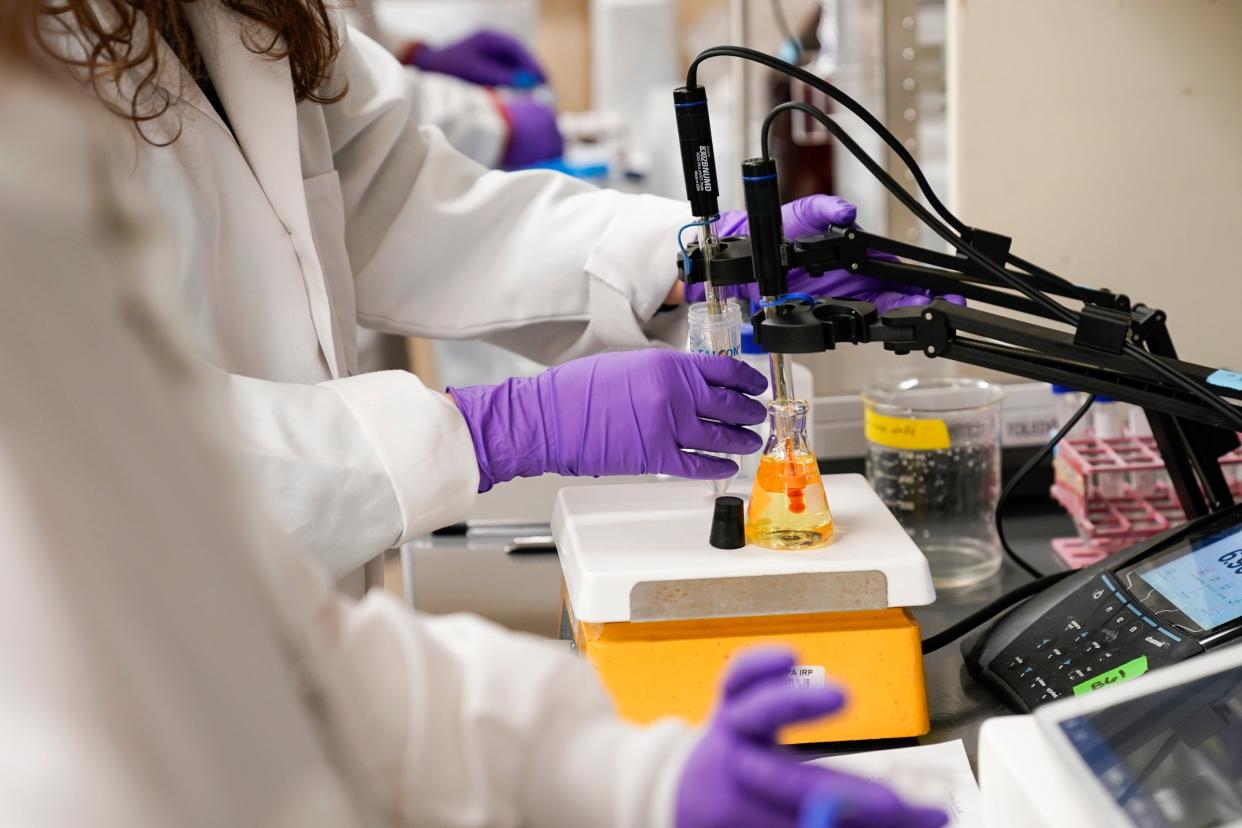'Forever chemicals' in Columbus' water supply, but at levels below EPA's proposed standard

"Forever chemicals" are present in Columbus' water supply, but have been detected at levels below the threshold proposed last week by the Environmental Protection Agency.
"Currently, we would be below the limits they have just set out," said Rod Dunn, manager of the city's Water Quality Assurance Lab.
Dunn said the city tested its water supply for the chemicals — perperfluoroalkyl and polyfluoroalkyl substances, or PFAS — in anticipation of the EPA's proposal.
If finalized, the federal government would limit perfluorooctanesulfonic acid (PFOS) and perfluorooctanoic acid (PFOA) ― the two most studied PFAS ― to four parts per trillion (ppt) in drinking water, the lowest reliable detectable amount. The EPA has also proposed regulating four other PFAS chemicals: PFNA, PFHxS, PFBS, and GenX.
The EPA said last year that PFAS could cause harm at levels "much lower than previously understood." Previously, the agency had advised that drinking water contain no more than 70 ppt of the chemicals.
In 2020, a nonprofit environmental group said it had detected nine forever chemicals in Columbus' tap water, totaling 16.4 ppt. The Environmental Working Group also said it had found 4.8 parts ppt of perfluorobutyrate (PFBA), a breakdown product of other forever chemicals, in the water.
In a statement, Columbus' Division of Water said "there was some ambiguity" about when and where the Environmental Group took its samples, so the department cannot confirm they were taken from the city's distribution system.
"Another complication is that the substance reported at 4.8 ppt, perfluorobutyrate, is not one of the two PFAS classes on which U.S. EPA is proposing a limit of 4 parts per trillion," the statement read. "The U.S. EPA proposal released on Tuesday listed the health-based water concentration for PFBS at 2,000 ppt, so 4.8 ppt is low.
"This highlights that not all PFAS are the same, and cannot be lumped together as a sum total. The unknowns, and the complicating factors of trying to relate those earlier samples to U.S. EPA’s complex proposed limits, makes an apples-to-apples comparison very difficult."
The EPA's new rule would require utilities to remove PFAS from drinking water. Dunn said given the low amounts of PFAS detected locally, he and other officials are deliberating whether it will be necessary to install new treatment equipment at the city's three water treatment plants.
“Currently, we’re OK. But we’re looking to see whether treatment might be necessary," Dunn said, adding the city would likely seek federal dollars for any improvements to keep water bills as low as possible.
More:New report finds dangerous chemicals in Ohio oil and gas wells
The EPA's estimate that it will cost water utilities about $772 million annually to comply with the rule seems optimistic to Dunn. “I think that’s low by a factor of 100,” he said.
What are PFAS?
PFAS are synthetic chemicals found in everything from non-stick pans to fire-fighting foam. They are called "forever chemicals," because most do not biodegrade and instead remain in the environment. Most people have been exposed to PFAS and have the chemicals in their blood.
Research suggests that exposure to high levels of PFAS may lead to increased risk of kidney or testicular cancer, changes in liver enzymes, increased cholesterol levels and increased risk of high blood pressure or pre-eclampsia in pregnant women, according to the Agency for Toxic Substances and Disease Registry.
Does Ohio limit PFAS?
Ohio does not have any legal limits for PFAS in water, food, waste, or use in consumer products, according to Sierra Club Ohio. The state has non-binding health guidelines for six PFAS chemicals in water, but the EPA limits will be more protective, the environmental group said in a news release.
“EPA’s strong new limits for these six PFAS chemicals will prevent serious illnesses and save lives in Ohio and beyond," Sierra Club Ohio Director Ericka Copeland said in the release. "EPA must keep its momentum by issuing rules to limit the production and use of PFAS chemicals and control their cleanup and disposal. In the long term, polluting industries, not the public, must pay the full cost of removing these ‘forever chemicals’ from the environment.”
The public will have a chance to comment on the EPA's rule, and the agency can make changes before issuing a final rule, expected by the end of the year.
Monroe Trombly covers the workplace and environmental issues for The Columbus Dispatch.
mtrombly@dispatch.com
@monroetrombly
This article originally appeared on The Columbus Dispatch: What the crackdown on 'forever chemicals' means for Columbus

